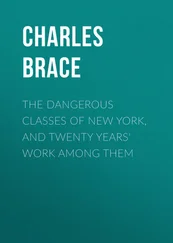Mattias Berg - The Carrier
Здесь есть возможность читать онлайн «Mattias Berg - The Carrier» весь текст электронной книги совершенно бесплатно (целиком полную версию без сокращений). В некоторых случаях можно слушать аудио, скачать через торрент в формате fb2 и присутствует краткое содержание. Город: London, Год выпуска: 2019, ISBN: 2019, Издательство: MacLehose Press, Жанр: Триллер, на английском языке. Описание произведения, (предисловие) а так же отзывы посетителей доступны на портале библиотеки ЛибКат.
- Название:The Carrier
- Автор:
- Издательство:MacLehose Press
- Жанр:
- Год:2019
- Город:London
- ISBN:978-0-85705-788-4
- Рейтинг книги:4 / 5. Голосов: 1
-
Избранное:Добавить в избранное
- Отзывы:
-
Ваша оценка:
- 80
- 1
- 2
- 3
- 4
- 5
The Carrier: краткое содержание, описание и аннотация
Предлагаем к чтению аннотацию, описание, краткое содержание или предисловие (зависит от того, что написал сам автор книги «The Carrier»). Если вы не нашли необходимую информацию о книге — напишите в комментариях, мы постараемся отыскать её.
The Carrier — читать онлайн бесплатно полную книгу (весь текст) целиком
Ниже представлен текст книги, разбитый по страницам. Система сохранения места последней прочитанной страницы, позволяет с удобством читать онлайн бесплатно книгу «The Carrier», без необходимости каждый раз заново искать на чём Вы остановились. Поставьте закладку, и сможете в любой момент перейти на страницу, на которой закончили чтение.
Интервал:
Закладка:
“Isn’t this insanely beautiful?” Ingrid said, her hand on my shoulder.
“Yes, insanely,” I said.
Then, after some time—impossible for me to assess or even comprehend—she led me across the courtyard again. All the way back to the station, just in time to buy tickets and board before our train pulled out, heading south.
And it was not until we were approaching Sigonella, some hours later, that I woke up properly again. After sunset the darkness had quickly become like a wall outside our window. Since the moon was hidden behind the clouds, not even the contours of all our radar installations up on the mountain ridges were visible.
Officially we had never had to admit that there were any American military bases at all on Italian soil, not even here at Sigonella, since here too all of the garrisons lay within the walls of the N.A.T.O. bases. But according to Edelweiss’ strategic presentations, in Italy alone we had sixty-four of our own installations. In total more than ten thousand American soldiers, upward of a hundred nuclear warheads.
What is more, the dream of perfect synchronization of all of our combat forces, not just in Italy but throughout the world, was to be fulfilled after the last step here in Sicily.
The objective was that nobody should be able to hide from us any longer—and the key to it all was a new creation by the name of M.U.O.S., “Mobile User Objective System”. Not many people knew what its exact function was. Why we spent such huge sums on the gigantic parabolic antennae, which demonstrably caused high levels of harmful electro-magnetic radiation inside the security zone, throughout more or less the whole of Sicily. Or devoted such extravagant efforts to suppressing local opposition to them.
The system was to consist of five satellites and four enormous ground installations to house the antennae. Soon the last satellite would be ready to be launched from Cape Canaveral—and sometime soon, at the beginning of 2014, the fourth and last base was to be formally inaugurated here in Sicily. The last point on the line around the globe from Western Australia, via Virginia and Hawaii.
Nowhere had the dishes encountered such protests as in Sicily. In and around the small town of Niscemi, thirty-seven miles south of Sigonella. For that reason we had not even been told the date for the opening of this last M.U.O.S. base.
So we passed through Sigonella and it was in Niscemi itself that we stepped out onto the platform. The evening breeze was still warm, my wrist-watch showed 68.4 degrees, at 19.39, December 23, 2013.
The final countdown had begun.
6.05
There are levels of believing and knowing. The only thing I believed was that I could never know. Not even what it would occur to Ingrid to do in the very next moment.
This time she led us hurriedly across the square outside the station. It was filled with festive decorations. We passed a blue neon-lit Christmas tree and went into a supermarket. Homed in on the meat counter. She asked for the pre-ordered turkey in her perfect Italian—and then let the boy manning the vegetable section load the trimmings into the shopping cart. Potatoes, fresh Brussels sprouts, ordinary yellow onions and small white globe ones. Then she picked up some kind of preserve that could have passed for cranberry, butter and flour, onion and seasoning for the gravy, white bread and dried sage for the stuffing. I recognized it all so vividly from my mother’s Christmas arrangements. Also one box of panettone from the huge piles of them, filled with pistachio nuts and chocolate chips, and a few bottles of matured grappa.
“For our first few week or so,” she muttered half to herself, “so we don’t have to show our faces outside any more this year. Just until the Jesús María business has blown over.”
Well after closing time, with a sullen young girl in a Santa Claus outfit letting the last customers out, we crossed the square again with an even heavier load. Most people did not spare us a look—despite our voluminous backpacks—as Ingrid took us further into the poorer quarters around the via Dante Alighieri. Our disguise seemed good enough: the son with most of the Christmas shopping. Plodding along with all that weight in his hands, a few steps behind, while his mother scurried along in front with her significantly lighter carrier bag.
Even though Ingrid was not only taller than me, but at least four inches taller than anyone else we came across. The short Sicilian men in their made-to-measure suits, on the square, on their way home after the stores had closed or maybe after a round or two with colleagues at their bar after work had finished for the Christmas break. The old ladies inside the stores—who were buying things before the weekend in a frenzy—but not to be seen in the street. As if swallowed up by the darkness.
Step by step Niscemi closed in, drew down the shutters, doused the lights across whole neighborhoods. The Christmas decorations grew scarcer, the presence of neon trees more sporadic.
But banners remained hanging from balconies in tight succession, as they had been all the way from the square, rainbow-colored, saying “NO M.U.O.S.”. As I put down the grocery bags to rest my arms and check the time, 8.42 p.m., I could see the first aerosol graffiti on the crumbling facades: “MAFIOSO + U.S.A. = M.U.O.S.” Then another message a few feet further on: A SINGLE SPARK CAN IGNITE A REVOLT AS BIG AS A BLUE WHALE, as Ingrid translated it, in the same ominously dripping blood red. Followed by an ever-increasing number of dark messages along the steep via Dante Alighieri.
Since a couple of years earlier, direct confrontations between the demonstrators and our own security forces had become the rule rather than the exception. After arousing mostly local media interest, the issue then spread to the national media and from there onto the radar of certain strategic military commands—and for the first time NUCLEUS became aware of the local resistance.
The activists naturally knew how to achieve the greatest impact. In addition to the sprayed slogans on the walls and the banners hanging from the balconies, the well-known graffiti artist Blu had come here, to the small mountain town of Niscemi in this remote corner of the world, and created two enormous murals.
Ingrid now stopped in front of one of them. It had rapidly become a signature piece, not just for the opposition here but also for the whole carnival-like and escalating peace movement. Amba had a reproduction on one of her tote bags.
The painting was confrontational, exaggerated for effect. A grinning Death, playing the M.U.O.S. system as if it were a xylophone, with the bars sending off missiles instead of tones. It was General LeMay’s Cold War dream—and seemingly also Ingrid’s and maybe Falconetti’s too. To be able to control all these separate command centers as if they were one instrument. Fire off, or short-circuit, all of our nuclear weapons in one historic moment.
Even senior military figures had speculated aloud as to the exact purpose of the M.U.O.S. system. What could lie behind these vast investments? Why our reaction to the young anarchists’ opposition had been so extreme, almost personal. It was not only the so-called “defense analysts” in trade journals who had concerned themselves with the question, but also editorials in the mainstream media who would normally have left us alone. Even within the military apparatus itself there seemed to be a surprising number who had little more than basic information.
What seemed clear to most people was that M.U.O.S. would in due course replace G.P.S. as the world-encompassing communications network. That this new system would, as with so many other day-to-day technological functions, start as a high-tech military application and then be made available to the public. G.P.S. had, after all, been developed by our defense authorities during the ’70s, even if it was not brought into operation until 1994. That network was therefore twenty years old—and still we found it as ridiculously hard as ever to communicate with our most dangerous units.
Читать дальшеИнтервал:
Закладка:
Похожие книги на «The Carrier»
Представляем Вашему вниманию похожие книги на «The Carrier» списком для выбора. Мы отобрали схожую по названию и смыслу литературу в надежде предоставить читателям больше вариантов отыскать новые, интересные, ещё непрочитанные произведения.
Обсуждение, отзывы о книге «The Carrier» и просто собственные мнения читателей. Оставьте ваши комментарии, напишите, что Вы думаете о произведении, его смысле или главных героях. Укажите что конкретно понравилось, а что нет, и почему Вы так считаете.












